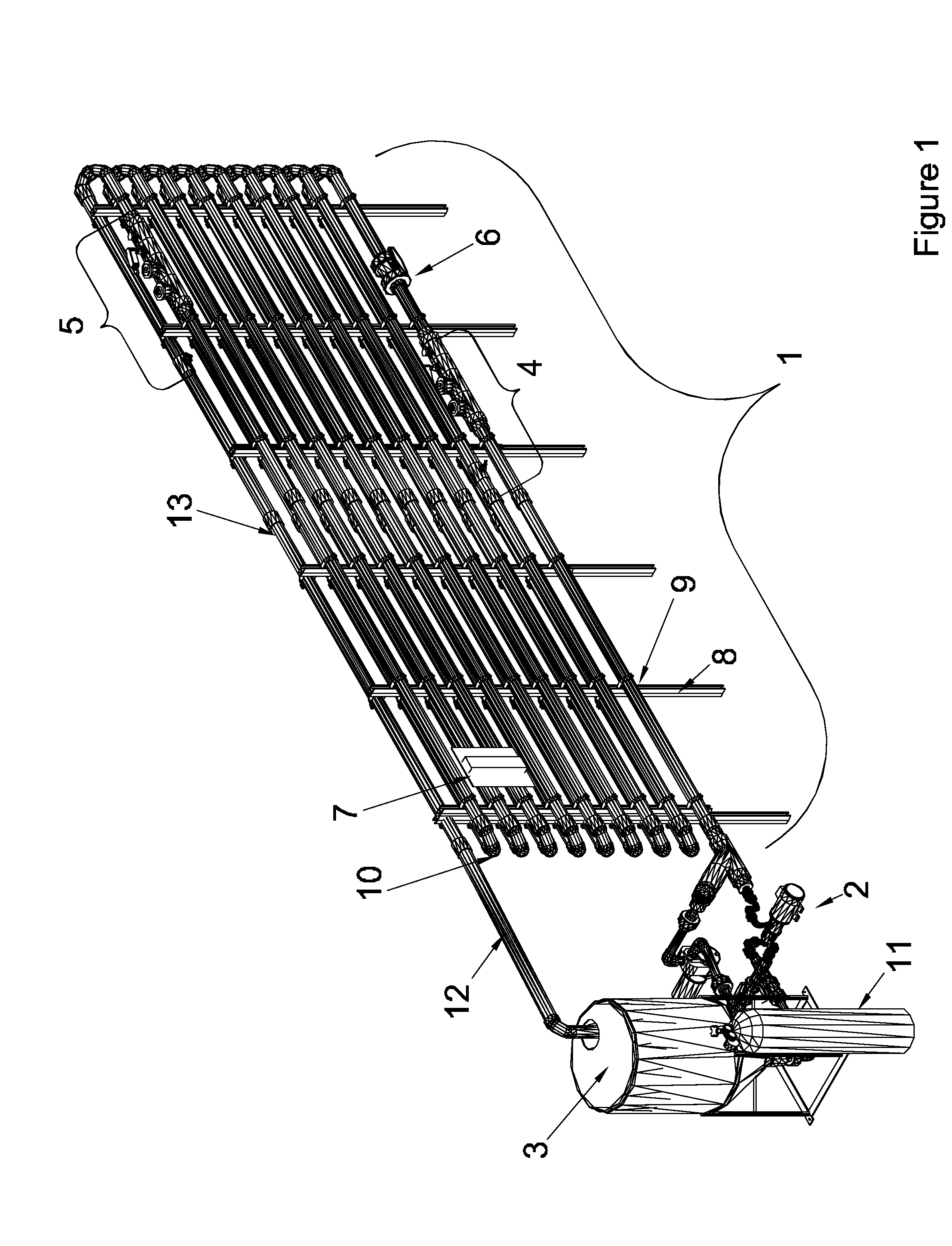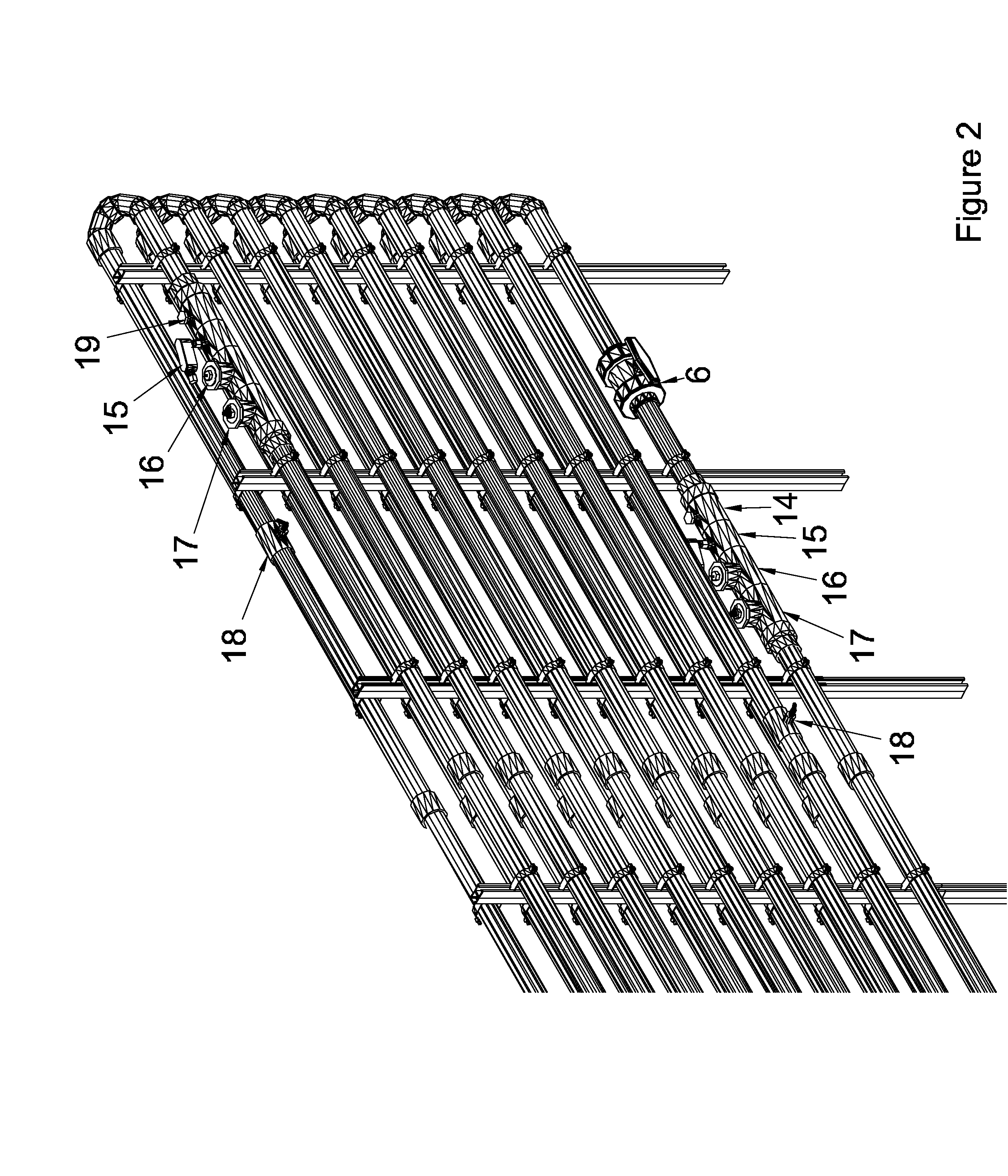Dry land erosion control using photosynthetic nitrogen-fixing microorganisms
- Summary
- Abstract
- Description
- Claims
- Application Information
AI Technical Summary
Benefits of technology
Problems solved by technology
Method used
Image
Examples
example 1
[0055]An inoculation experiment using fresh untreated photobiofertilizer was conducted from July 2003 to October 2004, to give 16 months of incubation in the field under ambient conditions. The experiment had two treatment levels of cyanobacterial inoculum, 0 and 500 mg·m−2 on a dry mass basis. The values in Table 1 are based on four replicated measurements and are significantly different at the 99% level. The data in Table 1 show that soil inoculated with terrestrial cyanobacteria increased the total nitrogen content 12-fold compared to the control. The dominant species of nitrogen in the inoculated soils are NO3−—N and NH4+—N, with nitrate nitrogen being almost four-times greater than ammonium nitrogen, and the nitrite nitrogen is only 1.6% to the total nitrogen in the inoculated soil. The distribution of nitrogen species followed a different pattern in the uninoculated control soil. In this case the nitrate and nitrite nitrogen levels were about equal and represented 81% of the t...
example 2
[0057]Two experimental plot arrays in the Rabbit Valley area were inoculated with the photobiofertilizer at four levels: 0, 30, 100, and 300 mg·m−2 on a dry weight basis with each treatment location was randomly assigned. The 18 month incubation period under ambient natural conditions was from March 2005 to October 2006. FIG. 5 shows the soil nitrogen response to the various inoculation levels. For both treatment arrays A and B, the inoculated soils had significantly more nitrogen than the zero inoculation control. Ammonium is the dominant oxidation state followed by nitrate and a trace of nitrite. Newly fixed or “new” nitrogen occurs as ammonium, and this observation is consistent with the interpretation that this nitrogen was fixed by the cyanobacterial inoculant.
[0058]FIG. 6 shows the soil Chlorophylla response to the inoculation treatments of arrays A and B. As with the nitrogen, the treated plots had significantly more Chlorophylla than the untreated control. When comparing FIG...
PUM
 Login to View More
Login to View More Abstract
Description
Claims
Application Information
 Login to View More
Login to View More - R&D
- Intellectual Property
- Life Sciences
- Materials
- Tech Scout
- Unparalleled Data Quality
- Higher Quality Content
- 60% Fewer Hallucinations
Browse by: Latest US Patents, China's latest patents, Technical Efficacy Thesaurus, Application Domain, Technology Topic, Popular Technical Reports.
© 2025 PatSnap. All rights reserved.Legal|Privacy policy|Modern Slavery Act Transparency Statement|Sitemap|About US| Contact US: help@patsnap.com



